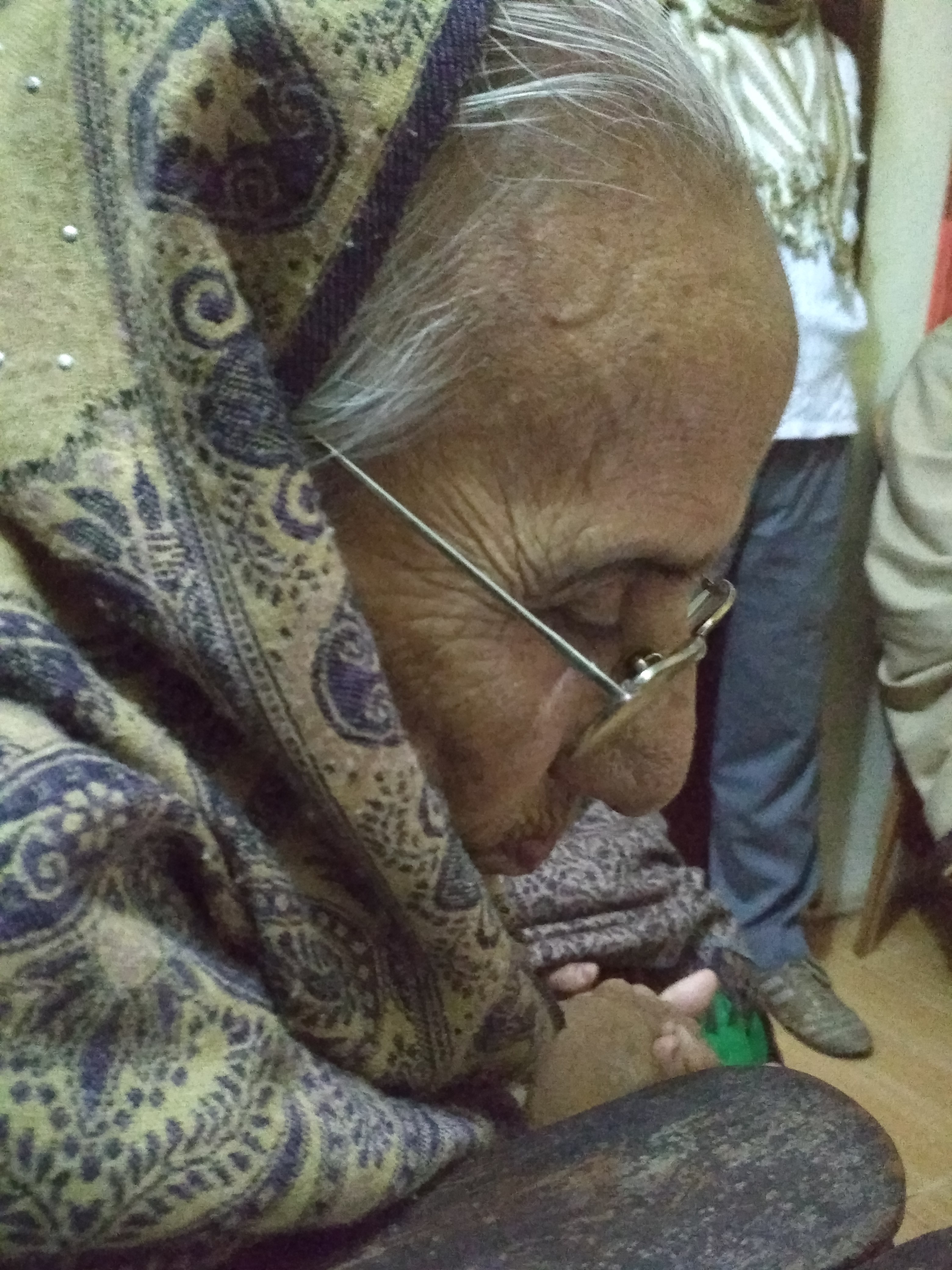At Travelling Archive Records, sound is our way of knowing about matters concerning time and history, tradition and change, landscapes and journeys; also questioning and interpreting them. From research and recording to sound design, writing the text, visual design, printing (partly on silkscreen) and packaging, the label with its small print-run is essentially hand-made; hence things to collect and keep.
Travelling Archive Records comes out in four series: Profiles, Landscape, Restoration, Interpretation.
SERIES
- Profiles: This series profiles artists as living archives of music, products of a system of orality that is fast changing.
- Landscape: This series presents music as topography, where the contour lines of a region mark its composition, rendition and the quality of the voices which come out of it.
- Restoration: The series focuses on the digital remastering of existing, unpublished recordings of unknown and known singers and composers, often made in ‘home’ settings, mostly with amateur equipment.
- Interpretation: This series presents music and soundart works of contemporary urban artists, created with or inspired by music and ambient sounds heard and/or recorded in the field.
- _____________________________________________________________________________
Shakti Chattopadhyay in the Sounds of His Time
Over five years have passed since we released our album ‘সময়ের শব্দে শক্তি চট্টোপাধ্যায়/ Shakti Chattopadhyay in His Time’, on his birth anniversary, on 25 November 2014. Today, 23 March 2020, marks the 25th anniversary of his death. We had printed 500 copies of our album and they went very fast. We did not have the means to print the album again, but Shakti is so loved by his readers and listeners that many have asked us for it. We offer here the whole album, including our bilingual booklet which you can download (click on the arrows on the right corner of the pdf viewer) and read. We are also uploading two additional tracks, not part of the original album, which further explore the sonic world of Shakti Chattopadhyay. They are centred around the voice of the sculptor Ramkinkar Baij, Kinkarda, to whom Shakti would go. Looking back now, it occurs to us that the album should have been subtitled ‘Shakti Chattopadhyay in the Sounds of His Time’.
These two additional tracks were intended to be part of the original album, but the soundtrack was becoming too long. The first is a reading by Sukanta Majumdar from a text by Shakti’s life-long friend and editor, Samir Sengupta, in which he describes a night of intoxication that the two friends had spent in the house of the sculptor Ramkinkar Baij. (Samir Sengupta, Amar Bondhu Shakti. {Kolkata: Parampara, 2011}, pp. 104-06). There were endless bottles of Bangla, endless bidis, endless conversation and music. Then the poet and his friend fell into a stupor on the floor. The possessed artist sat down to work. Samir woke up in the middle of the night in the dark, his throat parched. He saw a thin strip of light coming from the half-closed door of the other room. He looked in. Ramkinkar did not hear anything. He did not turn. There he was, sitting naked with clay in hand, looking at his creation. ‘If god were to ask me, what did you see on earth?’ wrote Samir Sengupta, ‘I shall say, I saw your rival at work down there.’
The second track is from an interview that Ramkinkar Baij’s neighbour, the late Hrishikesh Chanda, had taken; when, we do not know. We got a copy of it from Ramkinkar’s disciple, the sculptor K. Radhakrishnan. In this clip, the artist talks about Rabindranath’s indulgence to his work, about Nandalal Bose’s approval and about his bust of the poet. He also talks about music. Then he sings a song, accompanied on an oddly-tuned guitar, possibly by Hrishikeshbabu’s son, Kajal Chanda.
_____________________________________________________________________________
Chandrabati Roy Barman and Sushoma Das: Field Recordings from Sylhet
চন্দ্রাবতী রায় বর্মণ ও সুষমা দাশ
Seven years after the release of our first album, we are happy to give free access to the entire audio essay, including a downloadable PDF of the accompanying bilingual booklet (click on the arrows on the right corner of the pdf viewer). There are no more physical copies of the album left, so we can only share this digital version of the album with our listeners now.
_____________________________________________________________________________
RELEASED
Songs from 26H
অথবা, তাই তোমার কাছে ফিরে ফিরে আসি
Home recordings of Moushumi Bhowmik
February 2017
Series: Interpretation
After 16 years of contemplation and creation, Bengali singer and songwriter Moushumi Bhowmik comes out with her thoughts on home and the search for it. The album holds recordings which draw the listener into the intimacy of a space called home.
The album is the work of four (and more) artists. Oliver Weeks, who is a multi-instrumentalist and composer based in London; Satyaki Banerjee, based in Kolkata and a dotara-oud-sarod player and singer; Moushumi Bhowmik, singer-songwriter and music researcher and Sukanta Majumdar, audiographer and sound artist (Moushumi and Sukanta also being co-creators of The Travelling Archive). The bilingual booklet has essays by Moushumi, Oliver and Sukanta and the songs in translation. It also has photographs by Ronny Sen, Sukanta Majumdar and others. The album is designed by Sunayan Roy and printed by Imprint, Kolkata.
Shakti Chattopadhyay in His Time
সময়ের শব্দে শক্তি চট্টোপাধ্যায়
November 2014
Series: Restoration
Shakti Chattopadhyay (1935-1995) was one of the most important Bengali poets of the sixties to eighties period. His lines were imprinted on the sensibility of the youth of his time, his wild manner was emulated by his followers; he had an iconic presence in Bengali literary society in his lifetime and continues to be loved and revered even now. While Shakti’s poems were essentially lyrical and in his own reading they sounded like songs, he also had a natural gift for singing. He sang mostly song of Rabindranath Tagore.
This album, in our Restoration series, is made with home and private recordings of Shakti Chattopadhyay singing songs, reading poetry, interspersed with candid conversation and woven in with other sounds from his time. The accompanying 72-page bilingual booklet, with many beautiful images, explains the context and content of this audio essay, and more.
Chandrabati Roy Barman and Sushoma Das: Field Recordings from Sylhet
চন্দ্রাবতী রায় বর্মণ ও সুষমা দাশ
August 2013
Series: Profiles
The CD features two brilliant women artists of Sylhet, Bangladesh, Chandrabati Roy Barman (1931-2014) and Sushoma Das (b. 1930). They have been living archives of musical knowledge and women’s songs of their region. The album covers a seven-year field recording period from 2006 to 2012. The unique soundtrack is created as an audio essay with candid and unaccompanied singing and conversation, one or two moments of more formal performance, audio quotes from old gramophone records and voice-overs, and ambient sounds, giving to the listener a sense of being in the field. The accompanying 74-page bilingual booklet explains the context and content of this audio essay.
FORTHCOMING
Shambhunath’s Tea Stall
শম্ভুনাথের চায়ের দোকান
2018
Series: Landscape
Shambhunath’s tea stall in Faridpur, Bangladesh has been at the centre of our field recordings for almost ten years. Here we have recorded the unpindownable artist Laila who can move between regions of song with the ease of a free-flowing river, and the moody Habib, who remains totally faithful to his form and songs and place, singing the same song again and again, beating the same beat on the table top. Here we have had the most illuminating and entertaining conversation with Salamot Khan, on music, politics, folklore, you name it. From here we have set out to record the old and wise Ibrahim Boyati, or gone a bit further in search of Gosai Das, the singer of ageless kirtan, or to Sadek Ali’s courtyard for his impassioned songs of love and separation. Varied singers and storytellers, all living within a few kilometers of one another, different from each other, but similar too, converge with their sounds on our landscape of Shambhunath’s Tea Stall.
Music as Devotion: The Songs of Renuka Acharya
শুধু তোমারে ডাকিতে চাহি : রেণুকা আচার্যর গান
2019
Series: Restoration
Renuka Acharya (1931-2010) was an apparently ordinary woman who lived within her domestic confines in north Calcutta, had nine children, looked after her family and no one needed to take special notice of her. However, this quiet and invisible woman was also a highly inspired singer and songwriter, who could create for her music a private world within the space of her home and her life.
Renuka Acharya wrote mostly devotional songs to Goddess Kali; she had great faith in her. Sometimes she would also go away alone on pilgrimages. Thus it seems that faith and art were so tightly knit in her life, that one inspired the other. It is as if Kali, the Goddess of Darkness, was her own true Muse.
There is little of Renuka Acharya’s whole life’s work which has been preserved in sound; just a few hours of music recorded in her home by her children, in 2001, on a Sony micro-cassette recorder. However, there are manuscripts with her nearly 1500 devotional songs. Based on her audio recordings, manuscripts and remembrances of her children, several of whom got from her the gift of music and have turned out to be accomplished artists, this album will pay tribute to a remarkable woman who had the strength to create for herself her own special world of music, unperturbed by the absence of outward recognition. Her home was her world and in it she had built a shrine to her art.




 Moushumi will present at a workshop on THE ARCHIVE AS A KNOWLEDGE SITE: THE EXPERIENCE OF EUROPE AND INDIA, Organised by SCTR, JU in association with CNRS, France and IRN-AITIA.
Moushumi will present at a workshop on THE ARCHIVE AS A KNOWLEDGE SITE: THE EXPERIENCE OF EUROPE AND INDIA, Organised by SCTR, JU in association with CNRS, France and IRN-AITIA. Moushumi spent five days with students and teachers of the Tata Institute of Fundamental Research in Mumbai and also spoke at the Homi Bhabha Centre for Science Education. Her main talk was on The Travelling Archive
Moushumi spent five days with students and teachers of the Tata Institute of Fundamental Research in Mumbai and also spoke at the Homi Bhabha Centre for Science Education. Her main talk was on The Travelling Archive







